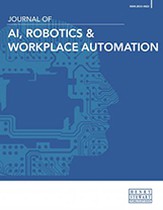On the predictability of long-term stock market returns: Design configuration of deep neural networks
Abstract
In 1998, Robert J. Shiller and John Y. Campbell proposed that long-term stock market returns are not random walks and can be predicted by a valuation measure called the cyclically adjusted price-to-earnings (CAPE) ratio. This paper is set to identify the predictive power of long-term stock market returns with deep neural networks and trace the impact of different architectural components of deep neural networks. We present three network types — recurrent neural network (RNN), long short-term memory (LSTM) neural network, and gated recurrent units (GRU) neural network — to ascertain what impact the different networks have on predicting long-term stock market returns and whether a parsimonious neural network model (PNNM) can be identified for practical application. The networks above have different design features that allow returns to be predicted and the effects of the various elements of the networks to be understood. For our study, we use monthly CAPE ratios and real ten-year annualised excess returns of the S&P 500 from 1881-01 to 2012-06, with data from 1876-06 (real earnings) to 2022-06 (real total return price) needed to determine the two datasets. Our results show improved forecasting accuracy over linear regression for all analysed neural networks. Only the complex trial-and-error procedure leads to the network design with the optimal result of minimising the root-mean-squared error (RMSE). This approach is usually associated with a considerable time and cost factor. Therefore, for time series studies of the present type, we propose a parsimonious GRU architecture with low complexity and comparatively low out-of-sample error, which we call ‘GRU-101010’.
The full article is available to subscribers to the journal.
Author's Biography
Manfred Herdt is a Doctoral Student at the Brandenburg University of Technology and a Research Assistant at Dortmund University of Applied Sciences and Arts. In addition to his academic research, he works as a data scientist in the financial services industry. He received his bachelor’s degree in business administration with majors in finance, business mathematics, and controlling. Subsequently, he obtained his master’s degree in finance at Dortmund University of Applied Sciences and Arts.
Hermann Schulte-Mattler is a Professor of Finance at the Dortmund University of Applied Sciences. Previously he worked for many years in the banking regulation division of the Federal Association of German Banks. Following studies in Economics at the University of Duisburg-Essen and Ohio State University and subsequent employment at a major bank, he studied in the PhD finance programme at the Wharton School at the University of Pennsylvania. He is the author of an extraordinary number of publications on the topic of international harmonisation of banking supervision rules and risk management. Furthermore, he is the co-publisher of a leading commentary on the German Banking Act and implementing regulations.
